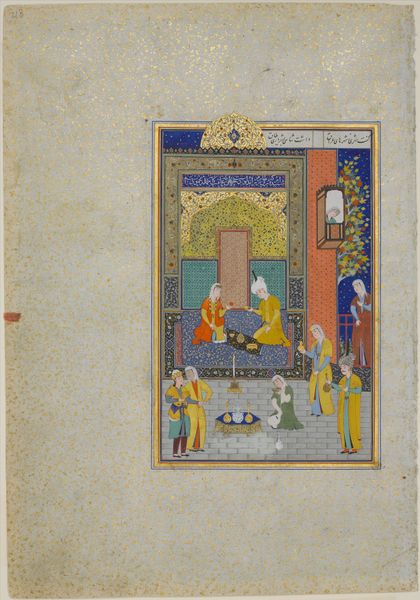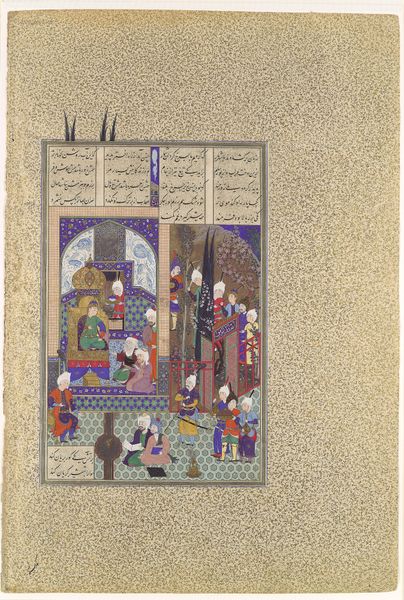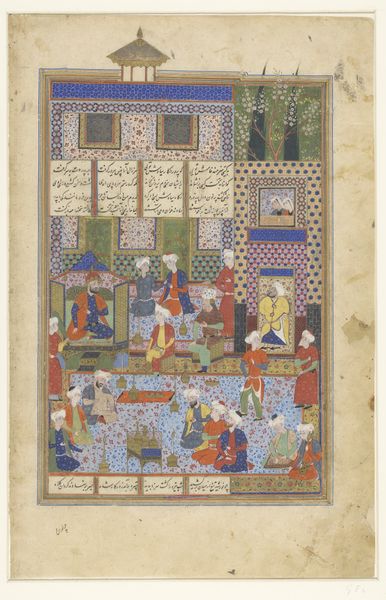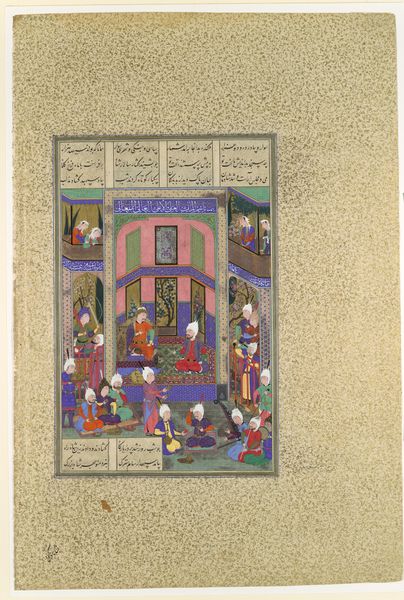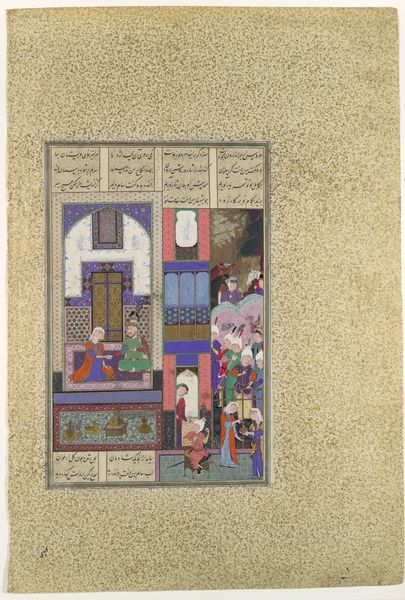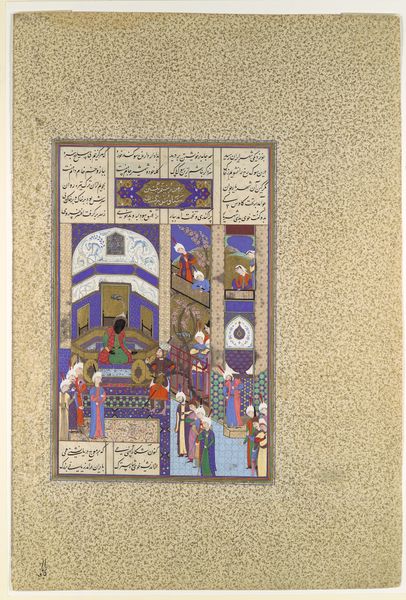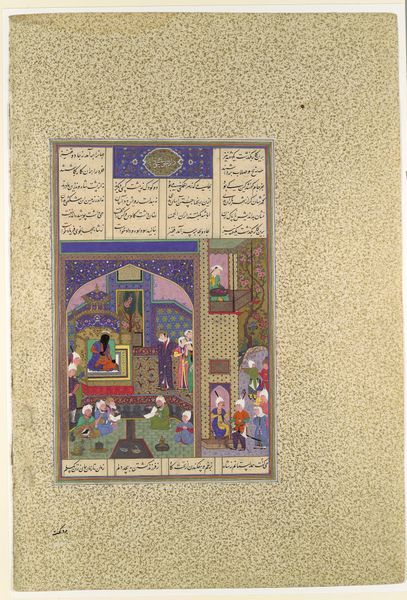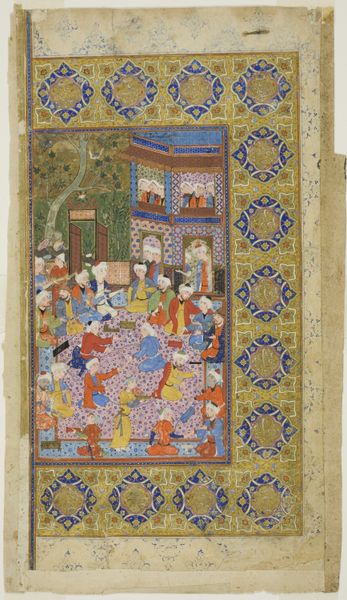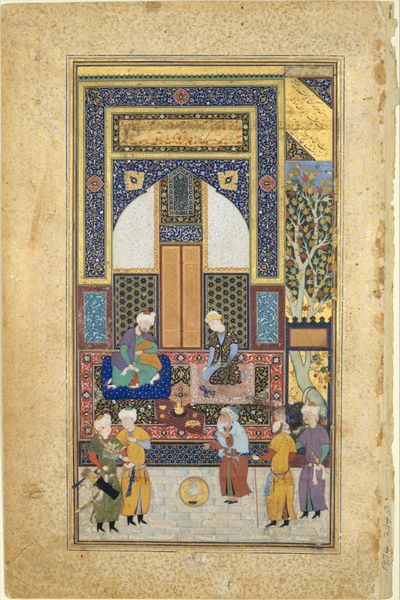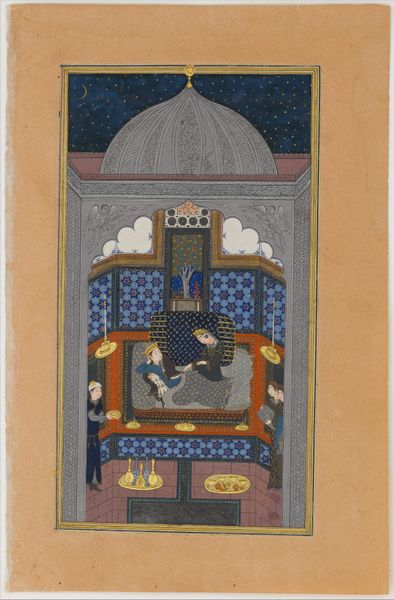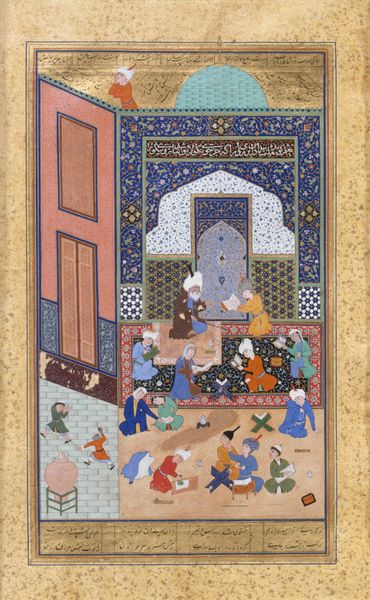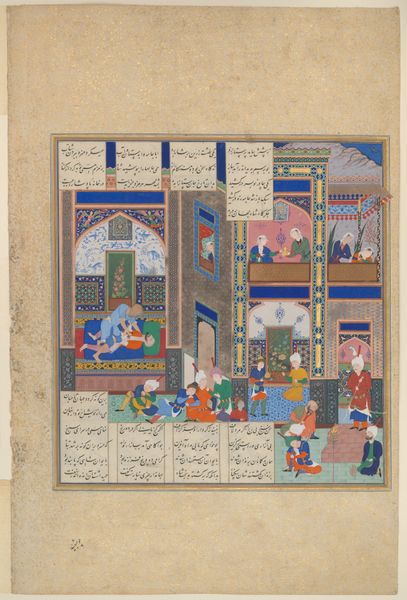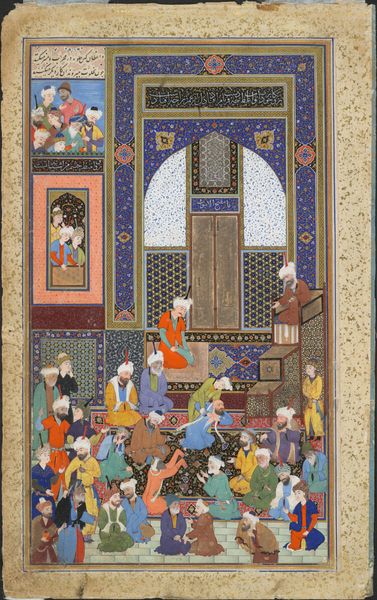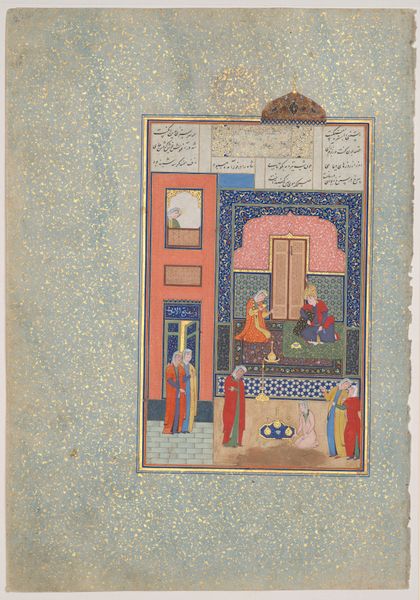
"Laila and Majnun at School", Folio from a Khamsa (Quintet) of Nizami of Ganja 1406 - 1457
0:00
0:00
painting, watercolor
#
narrative-art
#
painting
#
figuration
#
watercolor
#
islamic-art
#
history-painting
#
miniature
#
watercolor
Dimensions: Page: H. 12 5/16 in. (31.3 cm) W. 9 in. (22.9cm) Mat: H. 19 1/4 in. (48.9 cm) W. 14 1/4 in. (36.2 cm)
Copyright: Public Domain
Curator: Here we have a page from a manuscript: "Laila and Majnun at School," created sometime between 1406 and 1457, part of Nizami Ganjavi's "Khamsa," or Quintet. Editor: My immediate impression is one of vibrant yet controlled energy. The composition is quite striking—a cross-section of this space teeming with figures. And the colors! They seem both delicate and incredibly rich. Curator: Indeed. This watercolor on paper exemplifies the Persian miniature tradition, highly prized for its intricate detail and narrative depth. "Khamsa" itself is a collection of five epic poems, and this folio illustrates a key scene in the tragic love story of Laila and Majnun. It's fascinating to see how these tales circulated and were interpreted visually across cultures. Editor: What’s compelling for me is how the artist depicts the classroom scene. It speaks volumes about gendered education and social expectations of the time, where male scholars occupy central and elevated spaces, literally towering above the one female student depicted. Laila stands out—an interesting position for an audience in our present day. Curator: The location of the scholars within the building offers some cultural information. The artist, Ja'far Baisunghuri, skillfully utilizes architecture to reinforce social hierarchies, placing different figures within precise, defined spaces. Notice the complex geometries and intricate tilework of the buildings – these buildings communicate a dedication to institutional life and cultural permanence. Editor: Yes, and the rendering feels staged and theatrical, but somehow real at the same time, like a diorama enacting a pivotal moment. It almost demands us to consider what narratives are privileged and preserved in art historical settings. Curator: And that is very true of institutions, isn’t it? The stories we choose to tell and how we tell them. Consider how this delicate rendering was itself a political object, carefully crafted to be a testament to not just art, but also intellect, class and cultural pride, through its very acquisition and preservation. Editor: Looking at this now, I appreciate it more, and can imagine it creating important questions regarding what kinds of stories survive and who gets to interpret them for future generations. Curator: Agreed, there are many doors here to go through – historical, artistic and political.
Comments
No comments
Be the first to comment and join the conversation on the ultimate creative platform.
